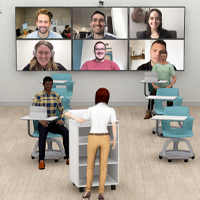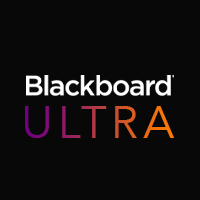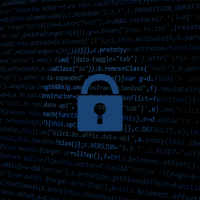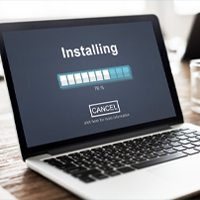
MinerAlert

MinerAlert
UTEP TECHNOLOGY SUPPORT

Over the summer, faculty voiced their preference for Zoom to facilitate synchronous teaching. We listened to them and found that this video conferencing platform offered an intuitive user interface and features not available in Blackboard Collaborate. One of the most popular features being the capacity of its video gallery. A large video gallery is important to faculty as it provides visual feedback related to student engagement and understanding of lecture topics. Another interesting use of this feature is for exam proctoring.
Outcome:
We made Zoom available to faculty as an alternative platform for synchronous teaching on August 19, 2020. A services catalog web page was created with information on how to enable Zoom inside the LMS and training offerings.
| Fall 2020 | Spring 2021 |
| 1,322 active users | 1,749 active users |
| 50,366 meetings by 364,534 participants | 74,824 meetings by 500,631 participants |
| 15 webinars by 784 participants | 83 webinars by 2,207 participants |
| Faculty usage by department (top 3): Music, Psychology, and Mathematical Sciences | Faculty usage by department (top 3): Music, Psychology, and Mathematical Sciences |

We refer to a HyFlex course as a Hybrid course where students are given the flexibility to attend class lectures in-person or virtually. This teaching modality has gained popularity during the pandemic and it is a good model to keep once we are back to the new norm. Designing a course for HyFlex teaching provides the added benefit of course continuation in case of natural disasters or another pandemic where in-person instruction is not possible. HyFlex courses can be used to increase student enrollment caps. We do need to provide the technology for instructors to expand their in-classroom lectures to remote students.
This project aims to find scalable, sustainable, and easy-to-use technology models for faculty to teach courses with students in and beyond the classroom’s physical space.
Outcome:
During the spring and summer of 2021, we transformed 22 classrooms to include 6 large lecture halls into “Connected Classrooms”. We are using the term connected classrooms for teaching spaces where there is a mounted web camera and mics to support lecture streaming/recording. Therefore, these classrooms support HyFlex teaching. Additionally, we have portable web conferencing equipment available to faculty for long-term checkout; hence, enabling any classroom into a provisional connected classroom.

As has been made clear during the COVID-19 pandemic there is a huge need on campus for a space that can facilitate simple recording for faculty and students at the push of a button. The Learning Studio specifically addresses those needs in a variety of ways. There are three "stations" in the room built to help facilitate the most commonly requested services: podcasting, lecture capture, and live streaming.
Outcome:
The Learning Studio opened its doors to the UTEP community on June 25, 2021. The Learning Studio, located in room 110 of the Undergraduate Learning Center has three distinct sections.

The Ultra Course View (UCV) is a new design in Blackboard Learn that creates a more streamlined and efficient experience for both faculty and students. In fall 2019, the new Ultra Base Navigation was introduced to campus. This changed the look and feel of the Blackboard landing page; and how faculty and students access information outside of their courses. The UCV is the continuation of that update into a new online teaching and learning experience within the course. This spring, we have organized a group of faculty to pilot UCV in at least one course of their choosing. This pilot is a great opportunity to restructure teaching processes, streamline work, and create a new learning experience for both faculty and students.
To conclude the pilot, the team will create a report by collecting data from faculty, students, and our incident management system. This report will include strategies to address major issues or concerns identified in the collected data and use this information for the implementation of the next phase(s) of this streamlined and intuitive course interface.
Outcome:
The spring 2021 UCV pilot was an overall success. Both faculty and students that participated enjoyed the new platform. Due to current limitation in functionality of the new experience, we have chosen to make the switch optional for the near future. Promotion for all faculty began in summer 2021 and the UCV is fully supported at UTEP starting the fall 2021 term. To learn more about UCV at UTEP, visit this webpage .

At the beginning of the COVID-19 pandemic, our initiatives were quickly realigned to support remote teaching and learning in a matter of weeks.
Outcomes:
• Developed three webpages with information and guidance particularly resourceful for the continuation of teaching, learning, and working from off-campus. We are updating these pages regularly and plan to keep them once campus reopens.
• Developed four comprehensive key webinars for remote teaching which were first facilitated throughout the faculty readiness week (March 23, 2020). These webinars continued throughout the summer and recorded versions were published on the Teaching Remotely webpage.
• We reached out to our instructional technology partners to request a readiness assessment on their systems to support a sudden increase in users. We focused on the Learning Management System (LMS), web conferencing platform, video management system, and online proctoring software.
• Academic software access from personally owned devices was essential for students to complete their course assignments; therefore, we renegotiated software agreements to ensure that the "use from home" license was included. UTEP students have had access to all software they need for their schoolwork without having to come to campus
• We added 1,200 laptops and 1,200 hotspots to our existing equipment pool at the Equipment Checkout Desk for students. Thousands of students are using UTEP issued laptops and hotspots to continue their studies from home
• Following CDC (Center for Disease Control) guidelines, we were able to keep essential in-person student-facing services open throughout the pandemic: the student computer lab with access to computers, scanners, and printers; and the equipment checkout desk for laptops and hotspot checkouts (both located in the UTEP Library)
• Implementation of new instructional technologies: Zoom, LinkedIn Learning, and GradeScope
• Our Blackboard administration group created a virtual office to assist faculty with questions related to Blackboard. Faculty who enters the virtual office get individualized assistance on anything Blackboard-related. The virtual office by Blackboard admins is a remarkable success and will continue to operate when campus operations are back to the new normal
• 100% uptime of our LMS throughout the pandemic
• Assisted university leaders in the creation of policy regarding the use of Blackboard Collaborate Ultra for faculty to discuss grades with students
• Per Provost’s Office request, developed an online application for the Satisfactory/Unsatisfactory grading option available for students in the spring and fall semesters. The app exported each completed application into a PDF document for Registrar’s Office records
• Blackboard course shells for faculty teaching in the fall were available weeks before the scheduled time. This to provide faculty with more time to prepare their courses for remote teaching
• Refreshed 172 aged laptops for faculty teaching fall courses
• Collaborated with the Provost Office in the acquisition and setup of software requested by colleges for remote teaching
• To support our faculty with remote teaching, we promoted a new remote-based tech service - A computer health check

Microsoft OneDrive is easily accessible to all UTEP faculty, staff, and students to save their work to the cloud. To protect data in user folders assigned as default file save locations in Windows computers, we need to enable the backup feature in the OneDrive app installed on UTEP desktops. These user folders are Documents, Desktop, and Pictures. In recent months, there has been an increase in security threats including ransomware attacks. With this feature enabled, our user’s work files are always available and secured.

In today’s world, an antivirus platform is no longer enough to protect endpoints (desktops, laptops, and tablets) from security threats. Computer attacks are getting more sophisticated and difficult to detect; therefore, we need to use advanced security tools to protect our computers and users’ data. The advanced tool to increase endpoint protection that we will use for university-owned endpoints is Microsoft Defender Endpoint (MDE). MDE is available at no additional cost through UT Systems – Microsoft agreement and provides advanced threat protection for endpoints by facilitating threat monitoring, detection, and incident management.

We implemented a self-service application to empower our users to install or upgrade UTEP licensed software. The application catalog is available from UTEP-owned Windows and Mac computers for software installations. An effective and consistent solution is essential for increased user adoption; therefore, the latest versions of UTEP licensed software and a high success ratio of software deployment are required.
The goal of this project is to achieve a 97% or better success rate with software deployed via our self-service software portal.